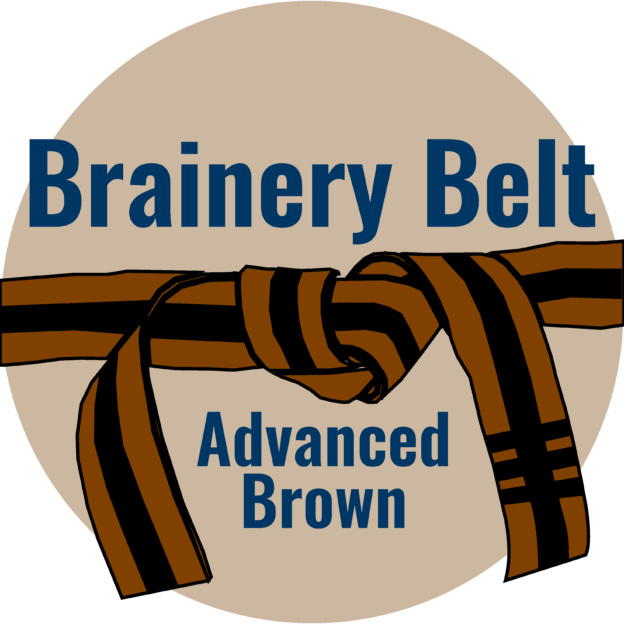
David Cutler
Member
Forum Replies Created
-
Points: 31,348Rank: UC2 Brainery Advanced Brown Belt III

A couple of follow up questions @Doug McLean
Can the user print text boxes that others created without issues?
Are they only having problems with 1 file, or is it every file that they open?
Is this happening with every markup or just text boxes?
If someone else opens the file on another machine are they able to print successfully?
I don’t necessarily have any suggestions based on your responses, but might spark an answer in someone else… 🤣
-
Points: 31,348Rank: UC2 Brainery Advanced Brown Belt III

What is this “printing” thing that you ask about? I’ve heard of some old process where people put images on paper, but that was like back in the 90’s. 🤣
I can’t say I’ve had that issue – but I’m also running Revu 21 at this point.
-
Points: 31,348Rank: UC2 Brainery Advanced Brown Belt III

Welcome to the Brainery @jwafflecanyoncontracting-net !
Adding a custom column to track % complete for a given markup shouldn’t be a problem. In theory you could also add a total value column and then write a formula in a 3rd column to calculate an earned value.
As far as a group of walls you should be able create a summary of the earned value, but I’m not aware of a method to make a calculation with a summary of data. This doesn’t mean that it isn’t possible, but I haven’t seen it done.
Depending upon what the final output you are looking to produce you may be better off with data collected in Revu and then processed with Power Query in Excel.
@Vince has shared some great processes for tracking progress – including his “50 shades of black” approach. Hopefully he will chime in.
@Doug McLean is our resident Power Query expert. He may have some ideas to share too.
-
Points: 31,348Rank: UC2 Brainery Advanced Brown Belt III

I haven’t made the jump to 21.4 yet. Trying to stay focused on getting stuff done. Curious to see how the cycle through markups works. I know the “Hide Single Markups” is a very handy upgrade.
-
Points: 31,348Rank: UC2 Brainery Advanced Brown Belt III

Thank you for the tips @Doug McLean ! I figured it would be something simple – it usually is. Classic user error. 🤣
-
Points: 31,348Rank: UC2 Brainery Advanced Brown Belt III

Thank you @Doug McLean !
One of my goals for 2025 is to figure this out! Thank you for getting me setup to succeed on this!😀
-
Points: 31,348Rank: UC2 Brainery Advanced Brown Belt III

I think that I figured out my problem with being able to re-use my Power Query @Doug McLean !
The problem I found wasn’t in the “source” information (the information you provided previously on how to change the source location helped me with this). The problem was that I was deleting the output data table from my file! So basically I was successfully telling PQ where to find the data and what to do with it, but I had taken away the place that the query was setup to place the processed data. I had assumed that PQ would generate a new tab in the workbook when I selected “Close & Load” – since that is what it does when you first setup the Query.
So I now have a template file that includes the Power Query (with the output sheet) ready to go! Very excited to use this in the New Year!
Now, to work through the information you provided above to automate the process further… 😎
-
David Cutler
MemberJanuary 7, 2025 at 7:27 am in reply to: Using Revu in the wild – how do you share markups with the field?Points: 31,348Rank: UC2 Brainery Advanced Brown Belt III
We may very well do that @Doug McLean – but we aren’t even at the point of having Revu available on their devices.
Curious to hear how folks are providing the interface for the folks in the field.
-
David Cutler
MemberDecember 23, 2024 at 7:19 am in reply to: Workflow “Quality Control” – what’s your process?Points: 31,348Rank: UC2 Brainery Advanced Brown Belt III
And yet again you I’ve found out about a feature that I didn’t know I didn’t know about. Not sure how I’d apply it yet, but something to file away in the back of my mind for future applications…
🙂
-
David Cutler
MemberDecember 20, 2024 at 7:07 am in reply to: Workflow “Quality Control” – what’s your process?Points: 31,348Rank: UC2 Brainery Advanced Brown Belt III
“Places” @troy-degroot ?
Are you referring to a location on a drawing, or is this a feature of Revu that I don’t know about????
-
David Cutler
MemberDecember 19, 2024 at 1:22 pm in reply to: What type of line measurement markups do you use?Points: 31,348Rank: UC2 Brainery Advanced Brown Belt III
I find the way Dynamic Fill stops at the edge of the line very annoying in my workflows, but it may work for others? Perhaps it should be an option to have the fill run to the middle of the line?
-
Points: 31,348Rank: UC2 Brainery Advanced Brown Belt III

I’ve built out a few sets of “contour” line types. I use these to highlight either the existing or proposed contours on grading plans to make the contour lines “pop”. They also work well if you want to copy the contour lines onto another view or sheet – say to take them from a grading plan back to an existing conditions plan.
I find that creating the custom linetypes is a bit clunky at best…
-
David Cutler
MemberDecember 15, 2024 at 5:22 pm in reply to: What type of line measurement markups do you use?Points: 31,348Rank: UC2 Brainery Advanced Brown Belt III
I’ve been using “0” on most of my area measurements lately as I’ve found I can be more “precise”. Not sure it has any impact on my overall price, but I feel like I’m being more accurate… 😎
-
David Cutler
MemberDecember 13, 2024 at 11:46 am in reply to: Workflow “Quality Control” – what’s your process?Points: 31,348Rank: UC2 Brainery Advanced Brown Belt III
I’m using PQ to wash my data, but need to firm up my processes so that I can re-use the query, instead of re-writing it each time. I’ve played with updating the data source location, but don’t have that dialed in quite yet. I know you’ve said that that process is addressed in your Excon presentation, but I haven’t gone back to dig into it yet…
-
Points: 31,348Rank: UC2 Brainery Advanced Brown Belt III

You can set the scale of any toolchest. Simply click on the settings gear and then select “set scale”.
I have a few “scaled” toolchests based on the scales my drawings typically are set at. What is neat is if you have a markup that is say 10 feet long on a 1:20 scale sheet when you paste it to a 1:10 sheet it will automatically self adjust to the markup to the new scale.
This is really handy if you have a proposed condition drawing and 1 scale, and an existing condition drawing at another. You can take a snip of the proposed drawing, save it to a scaled toolchest and then apply the scaled snip markup to the existing condition drawing creating a scaled overlay. Bonus tip is to colorize the snip and set it to it’s own layer allowing you to clearly see the snip and toggle it on and off.

